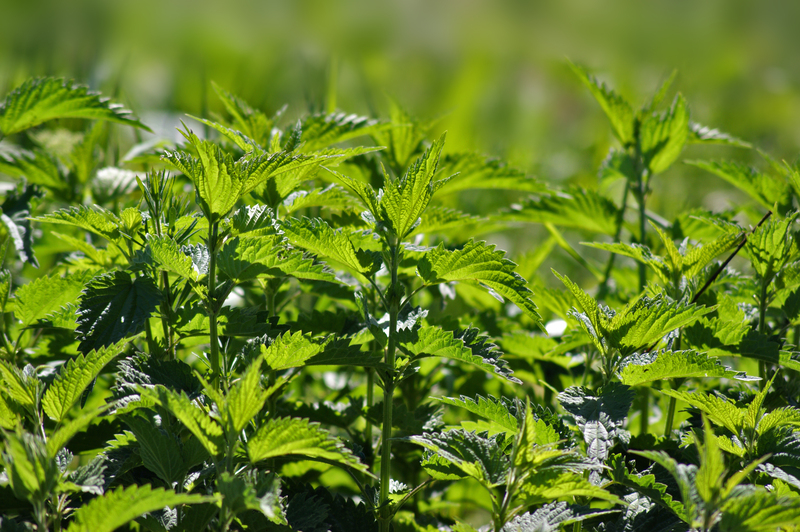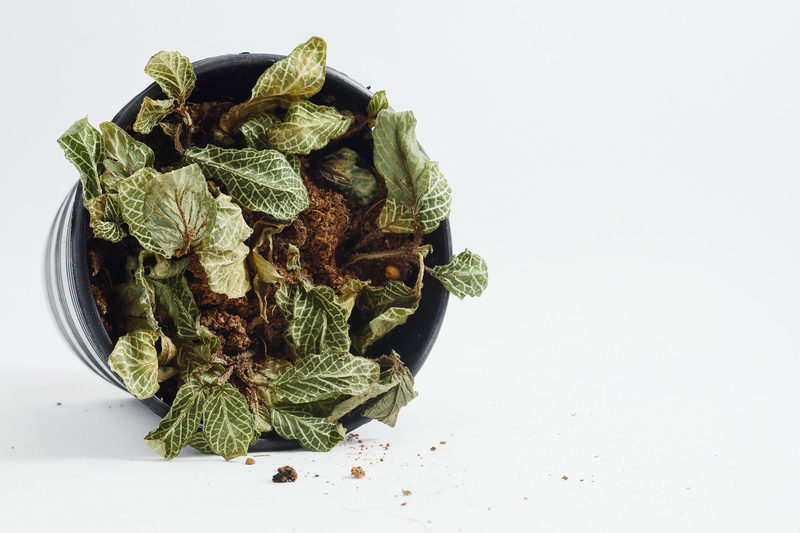Caring for Orchids Like a Pro
Posted on 25/06/2025
Orchids are fascinating, exotic, and breathtakingly beautiful plants loved by gardeners and plant enthusiasts worldwide. However, these delicate wonders can appear intimidating to tend. Are you eager to grow lush, vibrant blooms but unsure how? Learning how to care for orchids like a pro is easier than you might think! In this comprehensive guide, we'll unlock top secrets, best practices, and advanced techniques for nurturing healthy, thriving orchids all year round.
Understanding Orchids: A Brief Overview
Orchids belong to the vast Orchidaceae family, boasting over 25,000 species and more than 100,000 hybrids. Their incredible diversity means that orchid care can slightly vary among types, but the fundamentals remain constant.
Popular Orchid Varieties for Home Growers
- Phalaenopsis (Moth Orchid): Ideal for beginners, with long-lasting, easy-to-grow blooms.
- Cattleya: Known for large, fragrant flowers in vibrant colors.
- Dendrobium: Hardy, with canes and striking clusters of flowers.
- Oncidium (Dancing Lady): Characterized by sprays of small, cheerful flowers.
- Vanda: Loves bright light, famous for captivating, vividly colored blossoms.

Essential Elements of Professional Orchid Care
To care for orchids like a professional, it's crucial to master a few core principles. With the right knowledge, dedication, and a little practice, your orchids can flourish into spectacular, repeat-blooming plants.
1. Light: Finding the Sweet Spot
Light is arguably the most critical component in professional orchid care. Orchids are sensitive to their environment, and the right lighting fosters strong growth and abundant flowering.
- Phalaenopsis: Prefers medium, indirect light. A north or east-facing window is perfect.
- Cattleya and Vanda: Thrive in brighter, filtered light. Consider a south-facing window with sheer curtains for protection.
- Dendrobium and Oncidium: Enjoy bright but indirect light; avoid harsh midday sun.
Tips: If leaves look deep green, your orchid may need more light. Yellow leaves often signal too much sun.
2. Temperature and Humidity: Balancing the Elements
Orchids generally prefer warm temperatures and high humidity. The optimal daytime temperature is between 65-80?F (18-27?C), dropping a few degrees at night. However, some types (like Cymbidiums) can handle cooler conditions.
- Maintain humidity at 40-70%. Use a humidifier, decorative pebble trays, or daily misting to boost moisture levels.
- Avoid sudden temperature swings and dry, drafty areas which can shock or damage your orchid.
3. Watering: Mastering the Art
Proper watering is the cornerstone of orchid care success. Too much or too little water is the most common reason for dying orchids.
- Check the potting medium before watering. Water only when the top inch feels dry to the touch.
- Overwatering leads to root rot, while underwatering causes shriveled pseudobulbs and leaves.
- Use room-temperature, distilled, or rainwater to avoid mineral buildup.
- Water in the morning, soaking roots thoroughly, but never let the plant stand in water.
Advanced Techniques for Pro-Level Orchid Care
Repotting Orchids for Optimal Growth
Repotting is vital for orchid health and helps avoid diseases or suffocating roots. Most supermarket orchids should be repotted every 1-2 years, or if the potting medium breaks down.
- Choose a specialized orchid mix--bark, sphagnum moss, or a combo--that allows for aeration and drainage.
- Repot gently, removing old media and trimming dead roots with sterilized scissors.
- Select a pot with ample drainage and just large enough for the root system.
Feeding Your Orchids: Fertilizer Basics
Fertilizing orchids like a pro ensures robust growth and frequent blooms. Use a balanced, water-soluble fertilizer labeled "20-20-20" or one formulated for orchids.
- Dilute fertilizer to half-strength, and apply every two weeks in spring and summer.
- Reduce feeding to once a month in fall and winter during dormancy.
- Flush the potting mix with pure water monthly to prevent salt build-up.
Air Circulation and Cleanliness
Healthy orchids thrive in fresh, circulating air and pristine conditions.
- Ensure airflow around the plant with an oscillating fan set on low (avoid direct drafts).
- Wipe leaves occasionally with a damp cloth to remove dust and pests.
- Remove spent blooms and yellowing leaves to prevent disease.
Recognizing and Resolving Common Orchid Problems
Even with expert care, orchids can encounter issues. Learn to spot, diagnose, and resolve these swiftly to protect your prized plants.
Yellowing Leaves
- Cause: Overwatering, underwatering, sudden cold, or nutrient deficiencies.
- Solution: Adjust watering routine, avoid chilling, and check fertilizer.
Pest Infestations
- Aphids, mealybugs, and spider mites are common.
- Rinse off pests with tepid water, treat with neem oil or insecticidal soap.
Failure to Bloom
- Cause: Insufficient light or a lack of temperature fluctuation at night.
- Solution: Provide more light, or slightly lower nighttime temperatures for a few weeks.
Root Rot
- Cause: Poor drainage and overwatering.
- Solution: Repot immediately, trim away rotten roots, and use fresh, well-draining media.
Expert Tips for Year-Round Orchid Success
Seasonal Orchid Care
- Spring & Summer: Orchids enter an active growth period. Increase watering and feeding, but avoid waterlogged roots.
- Fall: Some types slow down. Begin to reduce watering and fertilization gradually.
- Winter: Many orchids rest. Keep in a bright spot, minimize watering, and protect from cold drafts.
Encouraging Re-Blooming
Once your orchid finishes flowering, do not discard it!
- Snip flower spikes just above a node to stimulate a new bloom (for Phalaenopsis).
- Allow a cool, dry period to trigger flowering in some species.
- Maintain adequate humidity and brightness during this phase.
Travel and Vacation Orchid Care
If you're away from home, don't worry--here's how to keep orchids happy in your absence:
- Water thoroughly just before leaving; add a humidity tray below the plant.
- Move orchids away from direct sunlight to reduce stress from lack of watering.
- Ask a friend or neighbor to check in and mist your plant if gone for over a week.
Myths About Orchid Care--Debunked
- "Orchids are impossible to grow": False! With reliable routines, orchids are surprisingly adaptable.
- "They only bloom once": False! With care, most will re-bloom annually--or more!
- "They need ice cubes for watering": False! Ice can shock roots; tepid water is best.
- "Orchids require constant repotting": False! Only when necessary or the mix degrades.
Building Your Home Orchid Collection
Caring for multiple orchid varieties can be a rewarding adventure. Start with one type (such as the beginner-friendly phalaenopsis), master its needs, and expand your collection as your orchid-growing confidence grows.
- Research each new orchid's specific requirements (some prefer cooler temps or a different light level).
- Group orchids with similar needs together for easier care scheduling.
- Label each plant to track feeding and bloom cycles.

Frequently Asked Orchid Care Questions (FAQs)
- How often should I water my orchid?
Water when the potting media feels dry an inch from the surface; typically once a week for most environments. - Do orchids need direct sunlight?
Most orchids prefer indirect, filtered light. Direct sun can burn leaves. - Why are my orchid leaves wrinkled?
This typically signals underwatering or root problems--check roots and hydration. - Should I cut off old flower stems?
For Moth Orchids, snip above a node to encourage re-bloom; for others, remove spikes once faded. - Can I grow orchids outdoors?
In mild, humid climates, yes--avoid frost and excessive sun.
Conclusion: Orchid Mastery Awaits You!
Caring for orchids like a professional is a balance of art and science. Each variety may require subtle adjustments, but the core principles--proper light, humidity, watering, and regular attention--apply to all.
By following the expert tips and proven strategies outlined above, you'll soon transform your home into a flourishing orchid haven. With patience, observation, and passion, spectacular blooms await. Embrace the rewarding journey of orchid care and watch your collection thrive--like a pro!
Ready to Begin?
Start your orchid adventure today, and share your stunning results with fellow enthusiasts. For more plant-care wisdom and orchid inspiration, bookmark this page and revisit whenever you need guidance or a boost of botanical bravery!

